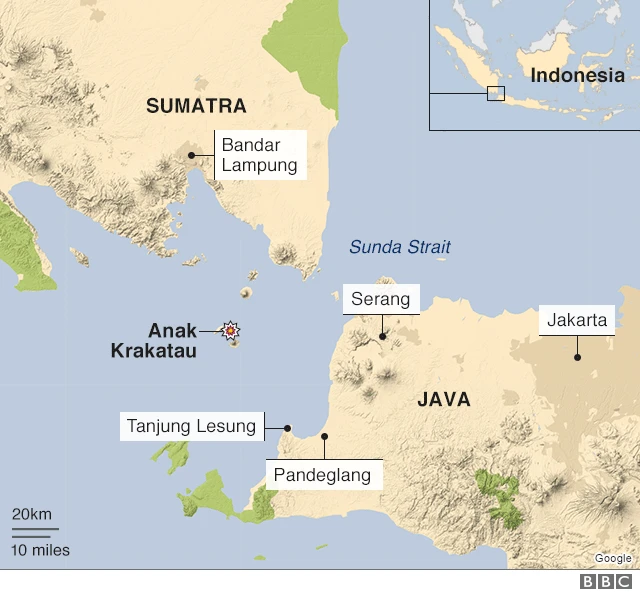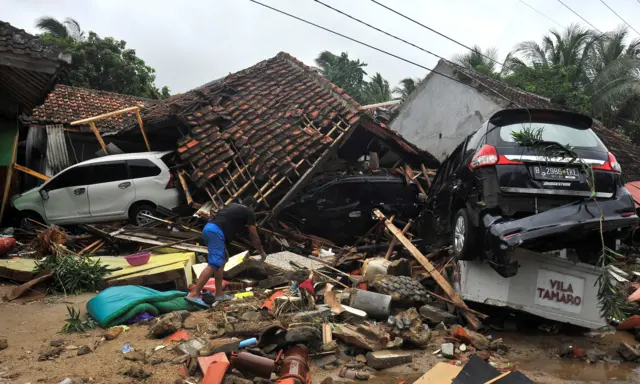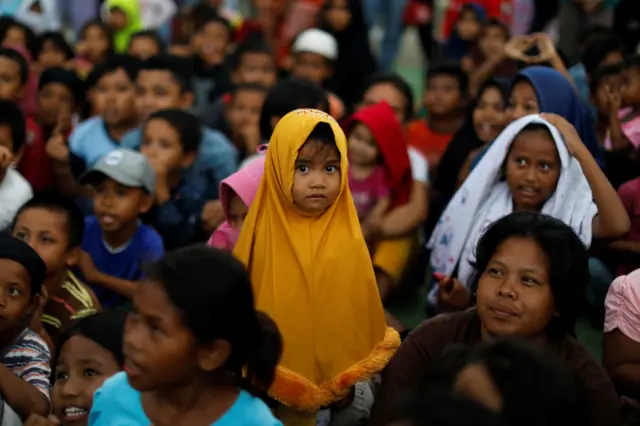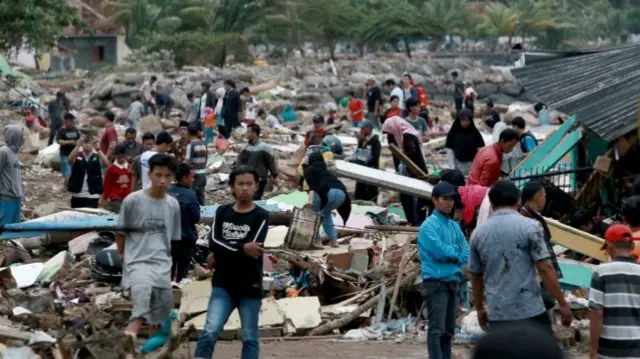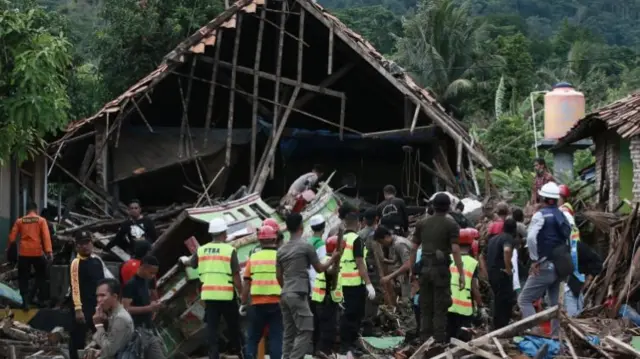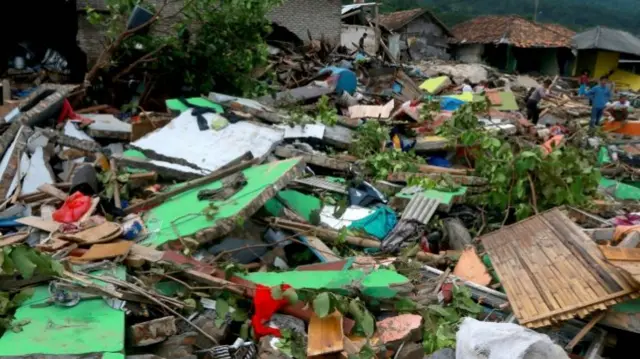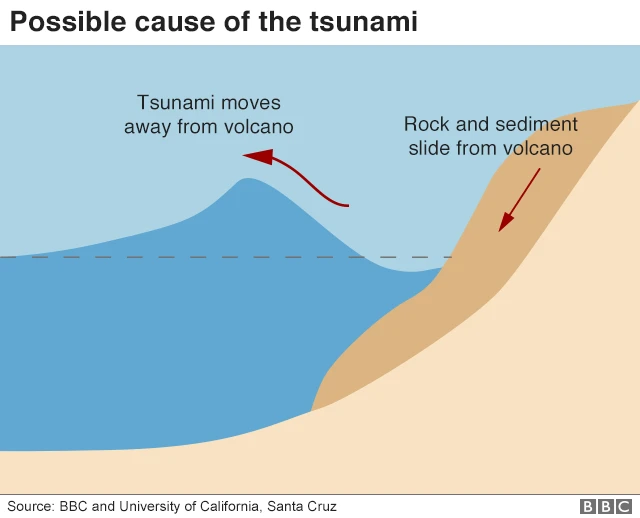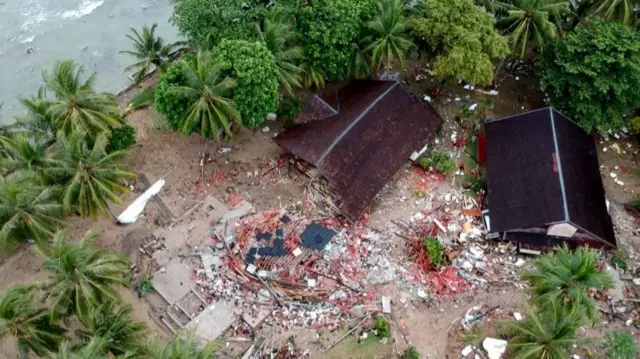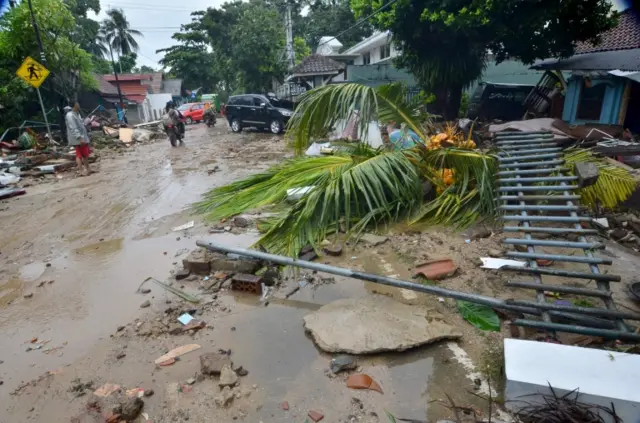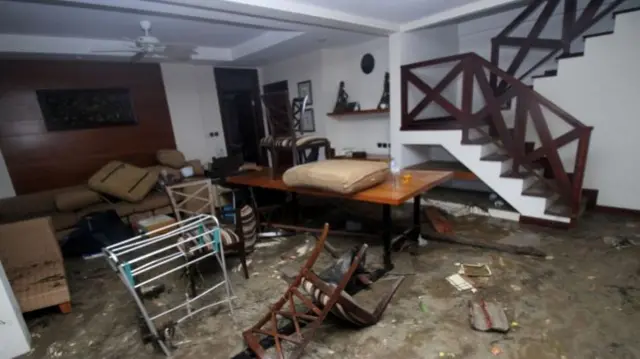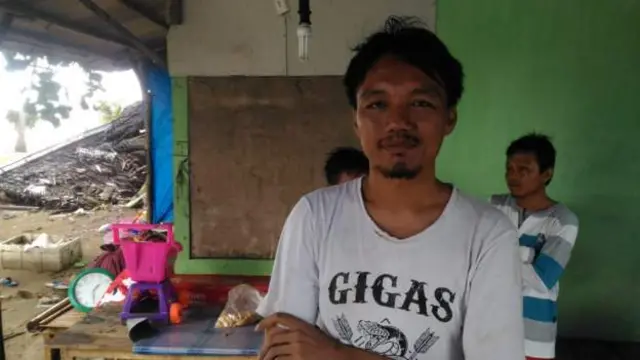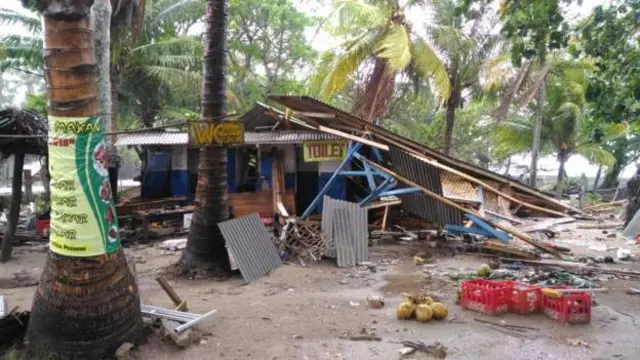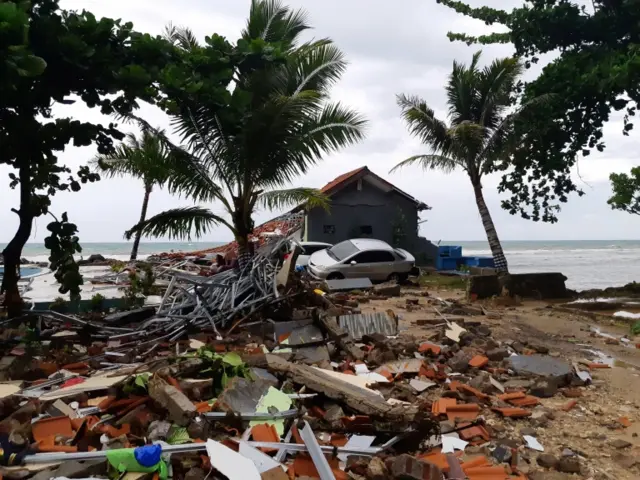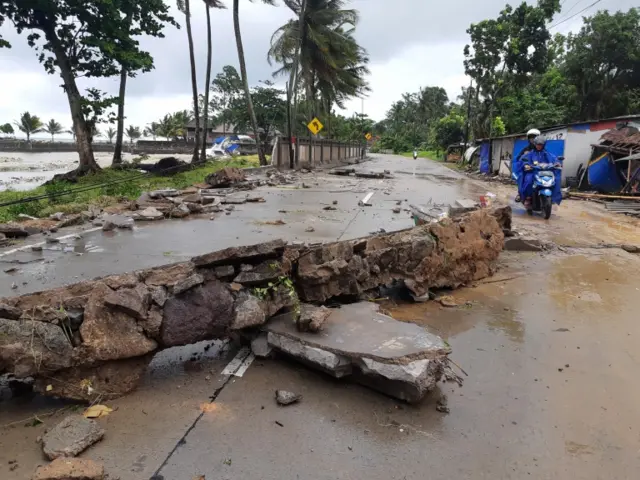We are closing our live coveragepublished at 16:24 GMT 23 December 2018
We are concluding our live coverage of the huge tsunami that has devastated coastal towns on Indonesia's Sunda Strait.
Here's what you need to know:
- More than 220 people have been killed and 843 injured after the tsunami struck without warning at about 21:30 local time on Saturday
- There are fears that the death toll will rise further as emergency teams reach the hardest-hit areas
- It is thought that the Anak Krakatau volcano erupted and triggered undersea landslides which then caused the tsunami
- The government has told people to move to higher ground amid fears that a second tsunami could strike
- You can read dramatic stories from some of the survivors here.
- And read more on the science behind the tsunami here.
